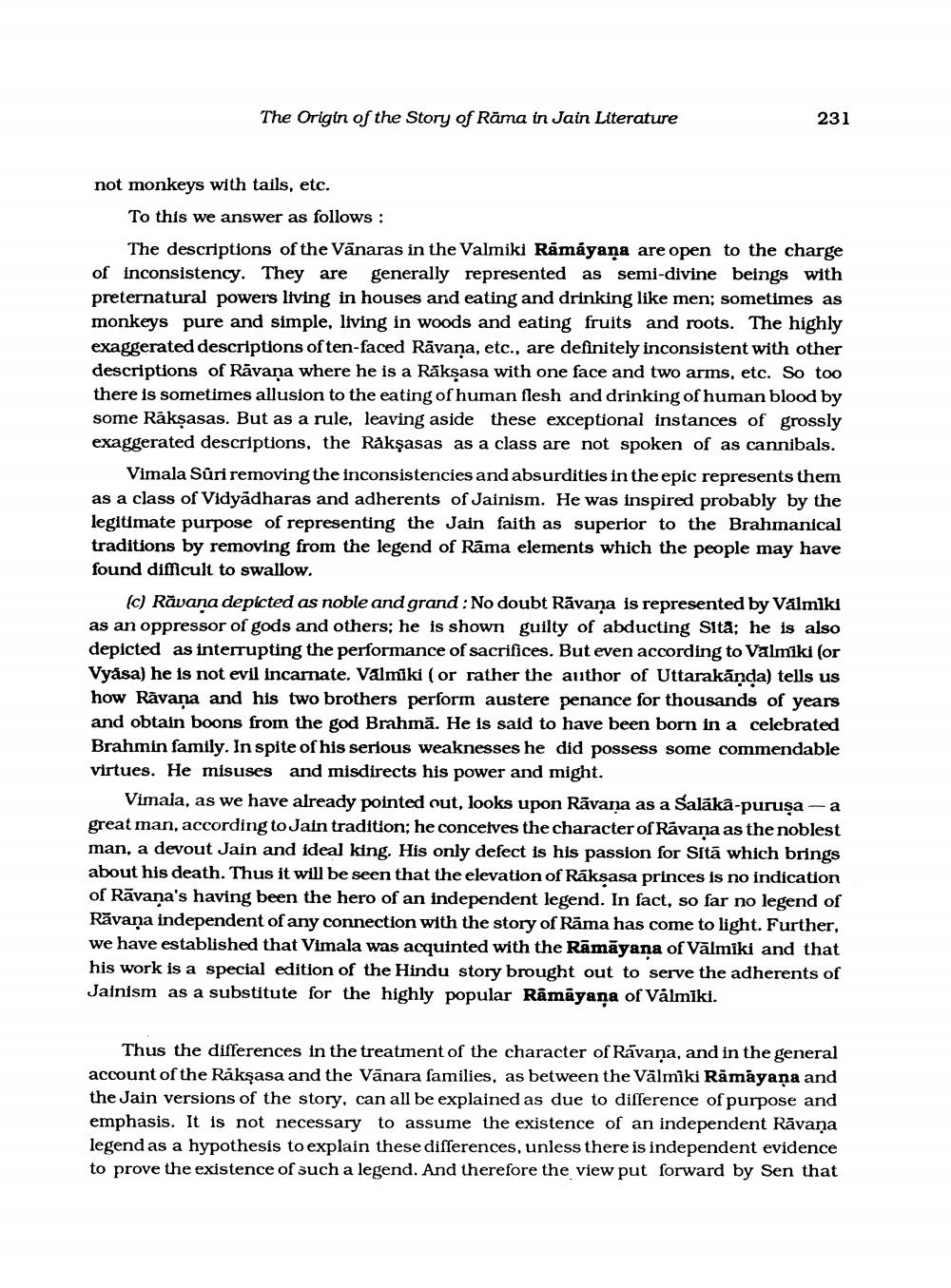________________
The Origin of the Story of Rāma in Jain Literature
231
not monkeys with tails, etc.
To this we answer as follows:
The descriptions of the Vanaras in the Valmiki Ramayana are open to the charge of inconsistency. They are generally represented as semi-divine beings with preternatural powers living in houses and eating and drinking like men; sometimes as monkeys pure and simple, living in woods and eating fruits and roots. The highly exaggerated descriptions of ten-faced Rāvana, etc., are definitely inconsistent with other descriptions of Rāvana where he is a Raksasa with one face and two arms, etc. So too there is sometimes allusion to the eating of human flesh and drinking of human blood by some Raksasas. But as a rule, leaving aside these exceptional instances of grossly exaggerated descriptions, the Rakşasas as a class are not spoken of as cannibals.
Vimala Sûri removing the inconsistencies and absurdities in the epic represents them as a class of Vidyadharas and adherents of Jainism. He was inspired probably by the legitimate purpose of representing the Jain faith as superior to the Brahmanical traditions by removing from the legend of Rāma elements which the people may have found difficult to swallow.
(c) Rāvana depicted as noble and grand : No doubt Rāvana is represented by Válmiki as an oppressor of gods and others; he is shown guilty of abducting Sita; he is also depicted as interrupting the performance of sacrifices. But even according to Valmiki (or Vyäsa) he is not evil Incarnate. Valmiki (or rather the author of Uttarakānda) tells us how Rāvana and his two brothers perform austere penance for thousands of years and obtain boons from the god Brahmā. He is said to have been born in a celebrated Brahmin family. In spite of his serious weaknesses he did possess some commendable virtues. He misuses and misdirects his power and might.
Vimaia, as we have already pointed out, looks upon Rāvana as a Salākā-puruşa -a great man, according to Jain tradition; he conceives the character of Ravana as the noblest man, a devout Jain and ideal king. His only defect is his passion for Sita which brings about his death. Thus it will be seen that the elevation of Raksasa princes is no indication of Rāvana's having been the hero of an independent legend. In fact, so far no legend of Rāvana independent of any connection with the story of Rama has come to light. Further, we have established that Vimala was acquinted with the Rāmāyana of Vālmiki and that his work is a special edition of the Hindu story brought out to serve the adherents of Jainism as a substitute for the highly popular Rāmāyana of Válmīki.
Thus the differences in the treatment of the character of Rávaņa, and in the general account of the Raksasa and the Vānara families, as between the Valmiki Rāmāyaṇa and the Jain versions of the story, can all be explained as due to difference of purpose and emphasis. It is not necessary to assume the existence of an independent Rāvana legend as a hypothesis to explain these differences, unless there is independent evidence to prove the existence of such a legend. And therefore the view put forward by Sen that




